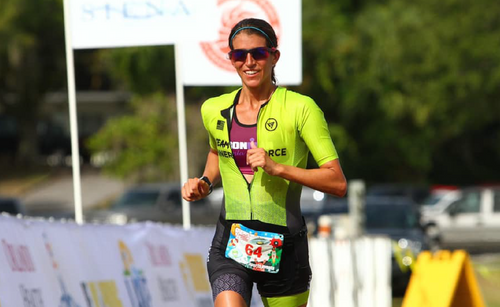The Importance of Interval Training in Running

For any type of running distance, it is vital to measure speed through intervals in shorter distances, adapting to a stronger pace and gaining agility.
Within a training plan, interval training will allow you to gain speed and face your upcoming races in a stronger position, which will improve your competition pace.
For all types of preparation, there are different possible intervals. From short (ranging from 50 meters), to long (which have a base of 1000 meters), but also take into account accumulate hills and slopes to gain power and improve your pace.
The appropriate pace for the series will be based on each runner. The intensity of that pace is key to any type of training.
When training short intervals, understand that these are just part of your plan. However, recognizing them will not necessarily bring benefits as different aspects have to be trained to achieve improvement.
Doing many short intervals allow you to improve your maximum VO2 - that is, the maximum amount of oxygen that your muscles can absorb.
With this approach, you work on improving the anaerobic side through a lot of short series loads.
THE SHORTER THE DISTANCE, THE FASTER THE PACE
Through this, a very practical type of training can be achieved that works on your capacity to hold distance and speed at the same time. What is most advisable would be to make a series that goes from 50m to 400 at a fast pace (but not your maximum) with a recovery of a similar distance at a smooth pace without stopping. Then continue with the next series.
Keep in mind that the shorter the distance, the faster the pace you will run at. On the other hand, if the distance is greater, the pace should be slower and more steady. Either way, these intervals need to be completed faster than your expected race pace.
Physically, this effort demands more energy, blood, and oxygen for the muscles, so at the end of training, it's normal for any athlete to feel exhaustion and fatigue.
Also, keep in mind that the average recovery period in short intervals should not exceed 45 seconds. That is why in these series, not only is the pace important, but also the recovery intervals.
Regarding the evolution of your training, athletes will feel a higher perceived level of exhaustion right after the interval training but as time goes by the body will adapt to the effort and your legs will gain greater speed and strength. Thus, the body will adapt to the increasing demand.
PEAK FOR RACE DAY
Generally speaking, when you do interval training, you usually demand a greater expenditure of power and, for that, a greater number of muscle fibers. It is therefore preferable to have recoveries that are not too short. When training distances between 500m and two kilometers, it is best to rest for about a minute.
When the intervals are 3km or more, it is usual to take two-minute resting intervals. Another alternative is to implement active recovery, like jogging, in order to keep an active heart rate.
This type of work will also allow you to have a better running feeling at a higher pace. The ideal is to start easy with the first interval and finish strong on the last one.
The positive results of interval training will not necessarily be seen at the beginning of the workout, but rather in how you feel after the workout is finished and whether you can sustain your target pace for the full duration.
Only after several months of systematic training will you begin to notice the effects of your progression, so you should plan your training by taking into account your key competitions in order to peak on race day.

For any type of running distance, it is vital to measure speed through intervals in shorter distances, adapting to a stronger pace and gaining agility.
Within a training plan, interval training will allow you to gain speed and face your upcoming races in a stronger position, which will improve your competition pace.
For all types of preparation, there are different possible intervals. From short (ranging from 50 meters), to long (which have a base of 1000 meters), but also take into account accumulate hills and slopes to gain power and improve your pace.
The appropriate pace for the series will be based on each runner. The intensity of that pace is key to any type of training.
When training short intervals, understand that these are just part of your plan. However, recognizing them will not necessarily bring benefits as different aspects have to be trained to achieve improvement.
Doing many short intervals allow you to improve your maximum VO2 - that is, the maximum amount of oxygen that your muscles can absorb.
With this approach, you work on improving the anaerobic side through a lot of short series loads.
THE SHORTER THE DISTANCE, THE FASTER THE PACE
Through this, a very practical type of training can be achieved that works on your capacity to hold distance and speed at the same time. What is most advisable would be to make a series that goes from 50m to 400 at a fast pace (but not your maximum) with a recovery of a similar distance at a smooth pace without stopping. Then continue with the next series.
Keep in mind that the shorter the distance, the faster the pace you will run at. On the other hand, if the distance is greater, the pace should be slower and more steady. Either way, these intervals need to be completed faster than your expected race pace.
Physically, this effort demands more energy, blood, and oxygen for the muscles, so at the end of training, it's normal for any athlete to feel exhaustion and fatigue.
Also, keep in mind that the average recovery period in short intervals should not exceed 45 seconds. That is why in these series, not only is the pace important, but also the recovery intervals.
Regarding the evolution of your training, athletes will feel a higher perceived level of exhaustion right after the interval training but as time goes by the body will adapt to the effort and your legs will gain greater speed and strength. Thus, the body will adapt to the increasing demand.
PEAK FOR RACE DAY
Generally speaking, when you do interval training, you usually demand a greater expenditure of power and, for that, a greater number of muscle fibers. It is therefore preferable to have recoveries that are not too short. When training distances between 500m and two kilometers, it is best to rest for about a minute.
When the intervals are 3km or more, it is usual to take two-minute resting intervals. Another alternative is to implement active recovery, like jogging, in order to keep an active heart rate.
This type of work will also allow you to have a better running feeling at a higher pace. The ideal is to start easy with the first interval and finish strong on the last one.
The positive results of interval training will not necessarily be seen at the beginning of the workout, but rather in how you feel after the workout is finished and whether you can sustain your target pace for the full duration.
Only after several months of systematic training will you begin to notice the effects of your progression, so you should plan your training by taking into account your key competitions in order to peak on race day.
SEE WHAT CUSTOM APPAREL LOOKS LIKE

GEAR UP
MORE FROM THE BLOG

Pea and broccoli soup
The reason I love this soup so much, unlike other soups that have to cook for hours, this one is...

Homemade Granola
Granola is super easy to make and makes up a balanced breakfast when eaten with full cream milk or plain...

Pat Casey: Team USA Coach On How To Peak Physically And Mentally For A Big Race
Pat Casey has been “wrenching and playing with bikes” for half his life. Now more than 15 years after...

Holly Smith: From 'Cheap Aluminum Bikes' to the 70.3 World Championship
Like so many talented endurance athletes it seems, Holly Smith stumbled across triathlon - quite literally, in fact. A dedicated...



